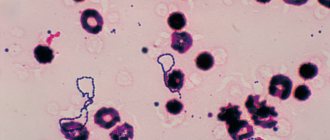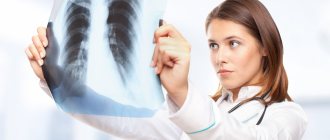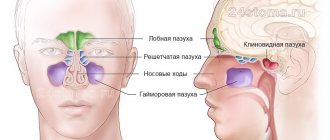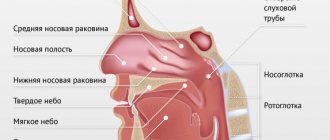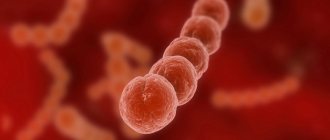Back to list Previous article Next article
25.07.2014
Tags:
bacteria, streptococcus
Vote
Streptococcal infections and the role of healthy microflora in their prevention
Theodor Billroth and the equally famous French chemist and microbiologist were the first to encounter these bacteria that parasitize humans . The first discovered them in 1874, when he was treating erysipelas, the second - several years later when examining patients with purulent diseases and sepsis. Over time, it became clear that these microorganisms also live in animal bodies and represent a whole family that has one thing in common: they provoke various diseases.
Meet streptococcus!
As you guessed, we will talk about streptococcus, one of the rather widespread microorganisms in nature. But it’s hardly necessary to get to know him in the literal sense of the word. Is it just informational, to a) try to avoid infection with these bacteria; b) correctly treat the ailments they cause, if an unpleasant “meeting” could not be avoided.
Streptococcus or, in Latin, Streptococcus , is, scientifically speaking, a genus of spherical or ovoid gram-positive facultative anaerobic bacteria. Arranged in pairs or in the form of chains of varying lengths. They belong to the Streptococcaceae family. It includes numerous species with certain differences. Both physiological and biochemical characteristics, including the degree of pathogenic effects on humans.
| INTERESTING TO KNOW. Favorite habitats in the body: respiratory tract, digestive tract. They especially prefer the mouth and nose, as well as the large intestine. They are also found in the vaginal environment. Streptococci are “capricious” when it comes to nutrient substrate. That is, as long as they don’t “eat” anything and don’t reproduce anywhere. Their most preferred environments are blood or sugar. |
Capable of forming small colonies (this is on the surfaces of solid media). Bottom growth occurs in liquid media. They are divided into three ecological groups. The first group includes S. Pyogenes, its representatives are pathogenic only for humans, the second group includes S. Faccalis, S. agalactia, etc., which are pathogenic for both humans and animals. The third group is represented by opportunistic oral streptococci S. Mitis, S. mutans and others.
Diseases caused by streptococcus
Streptococcal infections most often affect the respiratory system and skin. This group of diseases is characterized by the occurrence of complications of a very different nature from the internal organs. Let's talk about some of the ailments caused by these microorganisms.
Erysipelas. It manifests itself as bright redness of the affected area, most often occurring on the legs. The affected skin, usually clearly “bordering” on healthy skin, is swollen and painful to the touch. It is hot, shiny, and often covered in bubbles. The patient has a fever (but there is not always a temperature), he experiences weakness, and feels tired.
Erysipelas, erysipelas
Scarlet fever. The classic course is characterized by an increase in temperature to 38 degrees and above, headache and the so-called crimson, coated tongue with protruding bright papillae. Also characteristic: pain in the throat at the time of swallowing, redness of the posterior palate and tonsils, and the possible occurrence of purulent plugs. This disease is fraught with complications: myocarditis, glomerulonephritis and others.
Tongue of a child with scarlet fever
Streptococcal tonsillitis. Its symptoms are similar to those of other sore throats. Most often, a sore throat appears, the temperature rises, chills and general weakness occur, and the tonsils, back wall of the pharynx and soft palate turn red. Subsequently, purulent plaque may appear, and the cervical lymph nodes will enlarge. A sore throat caused by streptococcus is fraught with a serious complication - acute rheumatic fever (rheumatism), which in turn affects the heart valves and forms acquired defects.
Impetigo on a child's hand
Impetigo. It is also caused by other pathogens, but most often by streptococcus. In general, it manifests itself as superficial skin lesions, but with the streptococcal “variant”, red papules appear around the nose, mouth and lower extremities. Somewhat less frequently, they occur in other parts of the body. In their place, pustules or vesicles form, and after their opening, thick crusts of golden yellow color form. General health with this disease is usually not affected, but it is fraught with a possible complication - glomerulonephritis.
Necrotizing fasciitis. The disease is characterized by an acute onset. There is slight redness of the skin in the affected area; palpation of the affected area causes sharp and severe pain. The muscles are not involved in the pathological process, the patient feels weakness and increased fatigue, and has a fever. Over the course of a few hours, the reddened area increases in size, the skin on it swells, and takes on a dark red or even burgundy color. Due to the death of nerves, complete loss of sensation may occur.
Streptococci also cause: streptococcal myositis (reminiscent of the fasciitis described above, but the muscle layer is involved in the inflammatory process, lack of treatment can lead to death); pneumonia (shortness of breath, chest pain, mild cough, fever, the disease is complicated by pleural empyema); postpartum sepsis and endometritis (severe general condition, fever, toxic shock, death if assistance is not provided in a timely manner). In addition, people are “obliged” to these pathogens for the occurrence of meningitis , purulent arthritis , osteomyelitis , endocarditis , peritonitis , abscesses of the abdominal cavity and retroperitoneal space and other serious diseases.
Laboratory research methods
Diagnosis of diseases caused by Streptococcus viridans involves conducting a microbiological examination of clinical material and performing a polymerase chain reaction. Laboratory diagnostics begins with the selection of material. Microbiologists examine a swab from the throat and tonsils, nasal discharge, vaginal secretions, scrapings from the affected area of the skin, blood, urine, sputum, and cerebrospinal fluid.
Bacteriological examination is a “classic” in the diagnosis of infectious diseases. The selected material in sterile tubes or containers is delivered to a microbiological laboratory for pathogen isolation. It is inoculated on blood agar and one of the accumulation media - sugar or whey broth. After daily incubation, the results are taken into account. Microscopy of grown colonies reveals blue cocci arranged in chains. Of particular interest are colonies with a zone of greening hemolysis. They contain pathogenic microorganisms. Colonies with hemolysis are counted and the degree of microbial contamination is determined. After identifying the biochemical and antigenic properties, a conclusion is made about whether the microbe belongs to the species Streptococcus viridans and its quantity is compared with the maximum permissible. Normally, streptococcus viridans should not exceed 10 to 4 microbial cells. When the number of microorganisms in the pharynx is 10 to 5 degrees or more, they speak of its etiological role in the development of this disease. For clinicians, not only the type and quantity of the pathogen is important, but also its sensitivity to antibacterial drugs. To determine it, a special test is performed with a set of antibiotics from different groups.
PCR diagnostics is a modern method that allows one to detect an infection by isolating the genetic material of the pathogen. This rapid test provides accurate results in minutes. But according to modern standards, patients need to undergo a comprehensive examination, which takes a little longer, but gives a more reliable result. Since Streptococcus viridans is a normal inhabitant of the human body, it can also be detected in healthy people using PCR. That is why this method is not universal.
Additional studies include paraclinical blood and urine tests, ECG, and ultrasound of internal organs. These studies are necessary to determine the condition of the heart and kidneys. Very often, streptococcus spreads hematogenously from foci located in the glomerular formations or the valve apparatus.
Healthy flora against streptococcus
The occurrence of any streptococcal infection signals trouble in the body. For example, about a decrease in general immunity. Or a disruption of the normal intestinal microflora (dysbacteriosis), when lactobacilli and bifidobacteria that are beneficial to humans lose their positions, giving way to living space to opportunistic microflora. This actually includes streptococcus bacteria . Therefore, along with other methods of prevention (primarily maintaining personal hygiene, avoiding direct contact with sick people, as well as identifying hidden carriers), intestinal health should not be neglected.
Streptococci , as already mentioned, love a sugar environment. This means that you should not overuse sweets, baked goods and other products that can inhibit beneficial microflora and provoke putrefactive processes in the intestines. The more you pay attention to the health of your gastrointestinal tract by eating healthy foods (vegetables, fruits, dairy products, etc.), the less chance these harmful bacteria will have to “take over” in your body. After all, a healthy body presupposes a strong immune system – right?
General therapeutic measures
Streptococcal infection is dangerous due to its complications, so its treatment should be started immediately. Treatment of infection caused by Streptococcus viridans consists of treating the root cause—the microbe—and eliminating clinical manifestations that worsen the well-being of patients. For this purpose, traditional medicinal and physiotherapeutic methods, as well as traditional medicine, are used. An integrated approach gives the most positive results. On average, a course of medication lasts 7-10 days. Treatment is carried out under the supervision of specialists - ENT doctors, infectious disease specialists or pulmonologists.
Treatment of streptococcal infections requires the use of antibiotics. Patients are prescribed penicillins Augmentin, Amoxicillin and cephalosporins Ceftriaxone and Ceftazidime. Antibiotic therapy is carried out until complete sanitation, after which the patient is retested for microflora.- Gargling with streptococcal bacteriophage, Miramistin, Chlorhexidine.
- Enterosorbents for detoxification – “Polysorb”, “Smecta”.
- To restore the disturbed intestinal microflora, pre- and probiotics are taken - “Linex”, “Acipol”, “Bifidumbacterin”.
- Immunostimulating drugs – “Likopid”, “Bronchomunal”, “Polyoxidonium”.
- Desensitizing agents for relieving swelling - “Tavegil”, “Zirtek”, “Loratodine”.
- Antipyretic and anti-inflammatory drugs - Paracetamol, Nurofen.
- Vasoconstrictor nasal drops - “Tizin”, “Xylometazoline”.
- Detoxification and dehydration consists of drinking a sufficient amount of fluid, taking Regidron orally, and parenterally administering saline and glucose.
- Rinsing the mouth and throat with infusions and decoctions of medicinal herbs.
- Ingestion of natural antiseptics - honey, propolis, garlic, onions.
- Enriching the diet with vitamins – vegetables and fruits.
- Rosehip decoction and cranberry juice saturate the body with vitamin C and increase immunity.
- A decoction of blueberry leaves and berries is a good antiseptic and immunostimulant.
- Treatment of endocarditis is carried out through surgery - microbial vegetations on the valves are removed, the thickened endocardium is excised, and then plastic surgery is performed.
Particular attention should be paid to the care of patients, their nutrition and compliance with the drinking regime.
Probiotics can help
However, often the problem of dysbiosis as one of the possible factors favoring the emergence and development of streptococcal infections cannot be solved only by proper nutrition . Especially if a person has previously suffered one or another of them, his body is additionally weakened by antibiotic therapy and there is a risk of relapse of the disease. In such cases, probiotics - live lactic acid microorganisms (lacto- and bifidobacteria, including yeast) - become a real help . In addition to improving digestion, overall gastrointestinal health and strengthening the immune system, they produce biotin, folic acid, vitamin K and other essential nutrients.
All this becomes one of the foundations of antistreptococcal preventive measures. Taking probiotics directly during drug therapy for streptococcal infections is like a breath of fresh air for a person weakened by a serious illness. Entering the intestines (it is advisable to use their liquid forms), probiotics prevent antibiotics and other strong drugs entering the body from completely destroying the beneficial microflora. On the contrary, they allow it to get stronger, stimulating its growth and development. Practice convincingly shows that the inclusion of probiotics in the complex therapy of diseases caused by streptococcal bacteria allows patients to recover faster, regain their strength and become less susceptible to such infections in the future
Back to list Previous article Next article
Is there a vaccine against ASB?
Currently, many laboratories are working to create a vaccine against group B streptococci. It is hoped that the introduction of such a vaccine into practice will help save many newborns and reduce the risk of premature birth.
Is it possible to get pregnant again if the newborn had ASB after a previous birth?
Women who have had problems with group B streptococci in the past should report this to their antenatal clinic and maternity hospital. Prevention of ASB can prevent the development of ASB in subsequent pregnancies, and children will be born healthy and free of streptococci.
Group B streptococci and breastfeeding
Breastfeeding is not a risk factor for transmitting streptococcus from mother to child. Carrier women can breastfeed their children. Of course, hands and nipples must be clean.
